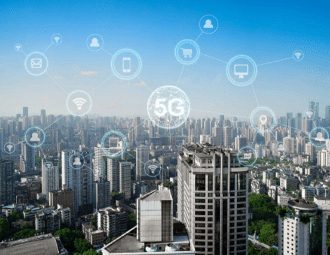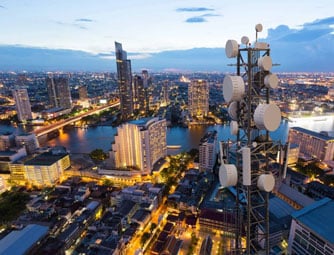Five Important Telecom Trends of 2022
January 13, 2022

2022 poses to be an exciting year for the Telecom industry. Let’s look at how current events are shaping this year’s Telecom industry trends.
The Telecom industry is one of the few sectors to pull out of the pandemic relatively unscathed. Many of its office jobs could be done remotely and, in a time of crisis and isolation, the signal has become a lynchpin of modern post-COVID life. Since the first lockdown, customers have only increased their demand for both wired and wireless phone services. And with 5G already in high demand, the rollouts will continue to accelerate mid-band signal from coast to coast.
We’re already seeing great things from 2022 in the Telecom industry trends.
1) Getting Telecom on the Cloud
First, Telecom businesses are facing the fact that the market is changing. Clients don’t want to call support or receive paper bills. They want live chat and app financial management. They don’t want clunky old systems that have worked on isolated servers for decades, they want cloud-based information systems and mobile toolkits. Telecom is taking 2022 to finally complete the digital transformation and take its infrastructure to the cloud. This can be tough for a well-entrenched company to do, but it’s well worth the effort to stay up with the times and improve the overall customer experience.
2) The Infrastructure Roll-Out for 5G Signal
3G and 4G are low-band signals that can travel long wireless distances between cell towers. 5G’s bandwidth improvements come from the fact that it is a mid-band signal – stronger but shorter distances. This means the existing network of cell towers is not enough yet to transmit 5G to every corner of the nation as we have for 3G and 4G. So new towers are being built as we speak, closing the distances between far-flung towers and bringing 5G to an increasing number of far-flung townships and rural areas across the nation.
Interestingly, we are also seeing an increase in fixed wireless point receivers. Fixed wireless, long the fallback internet of farmers and ranchers, can handle a directly sent 5G signal which could mean better cell and network performance for those in rural areas.
3) IoT Changes Wireless Signal Demands
IoT has also begun to play a role in Telecom decision-making. IoT devices connect to any wireless network, cable, or cell, adding an extra load on the bandwidth and an extra endpoint that requires cybersecurity. Telecom brands will need to consider how IoT smart home networks play a role in the services they will provide to residential clients. This is an opportunity for some disruptive services that improve overall smart home performance and safety.
4) Adapting to Post-COVID Demand
Then there’s the post-COVID demand response. Since the first lockdown, people have been using their phones and hotspots differently. From working and schooling at home to streaming more frequently with friends, the signal needs of customers have transformed over the last two years and Telecoms are still looking to adapt to those changes in demand.
5) Limited Inventory and the Supply Chain
Finally, Telecom is sharing similar struggles with all other sectors due to supply chain disruptions. It has become more difficult to complete any order of electronics due to the microchip shortage and the delays on essential building materials like steel and plastic. Telecoms are dealing with a low inventory and slowed production of their branded products including modems, routers, and hotspots.
The Telecom industry has an exciting road ahead. From the nationwide rollout of 5G to the internal rollouts of cloud integration, we look forward to seeing what else this year has in store for Telecom businesses. Contact us today to learn more about what’s going on with the Telecom industry this year and how to prepare your business for the hurtles to come.




























